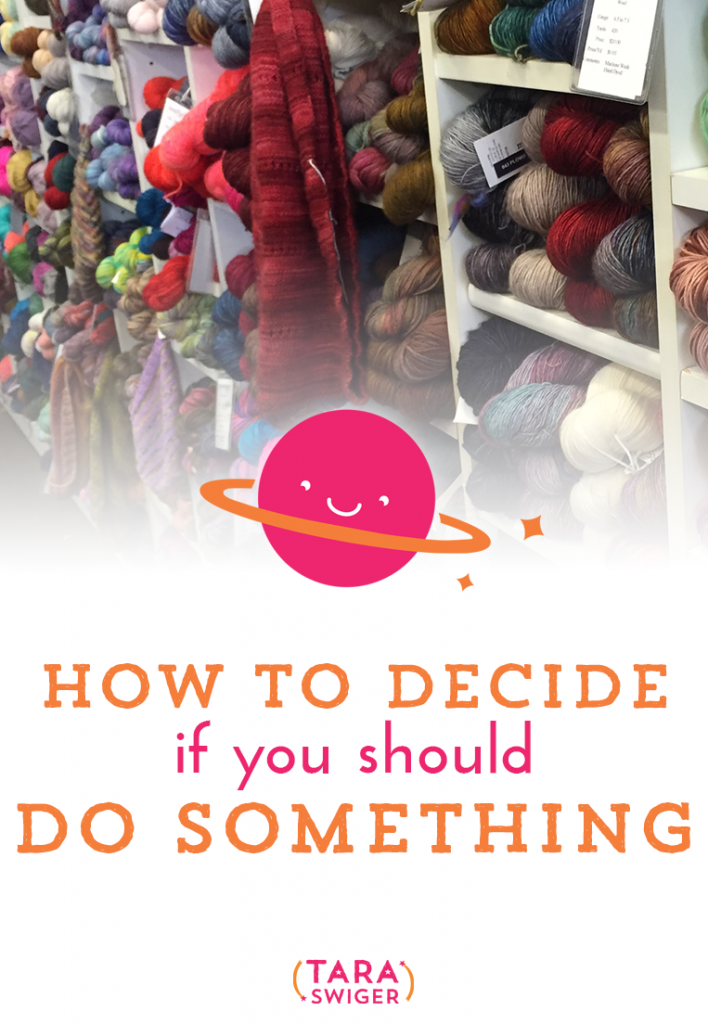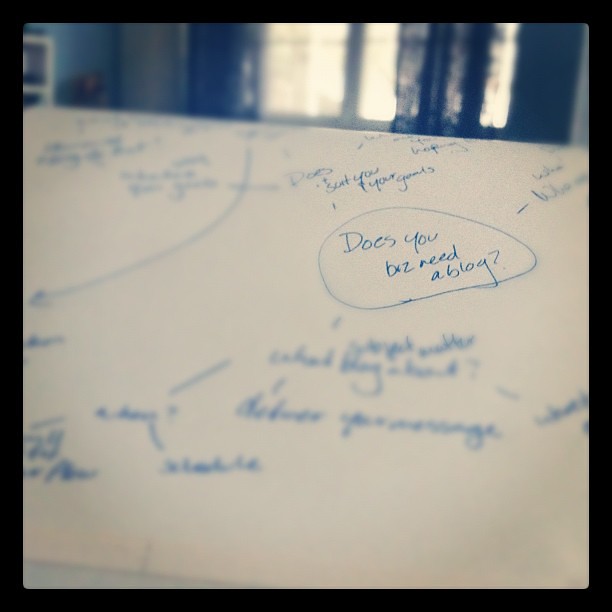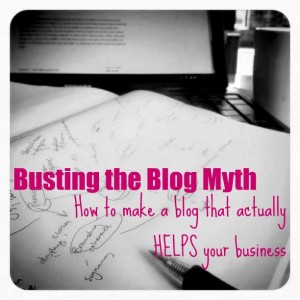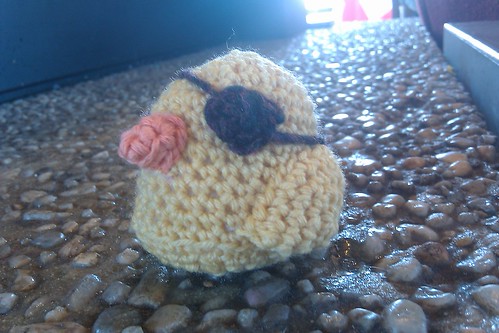You're allowed to build the business that you want, the kind of day that you want, and that you can interact with your products, people, and time in a way that works for you. You don't have to do what you've heard you should do in order to be succesfull in biz.
I talk and write and think about this (shoulds + permission) a lot, because you're thinking and talking and asking about it too. Nearly every conversation I have with a craftybiz explorer starts with them saying “Well, I know I really should… {blog, tweet, send a newsletter, blah}“
I always answer with two questions: Why? How?
No, really: Why?
Why do you think you need to do it? What is your goal with it? Which one of your specific goals will it help you reach?
Everything you want to do, everything you think you should do – ask it: WHY?
This one question can keep you focused, can keep you with the effective, important work. It can wipe away the shoulds, and direct you towards what you really want.
One of the giant-est shoulds in the crafty world is that you should be blogging. And after being part of the blog-reading and blog-writing world for nearly 10 years (we're counting that Diaryland I had in college, because I made my first “internet friends” with it), I'm still not entirely convinced*.
*I get into why you should/should not blog in a free mini-course you can get here.
But for a lot of us, we slice the should with a Why and our answer is simple and clear: because we love to connect.
We love to have a place to share our words, or our photographs. We have a business we love and we want to share more than 140 characters about it. We create products we love and we just want to talk all about it. We've met our customers and they are lovely and we want to have a way to communicate with them.
But blogging [personal, cooking, gardening, crafting] is totally different than blogging for your business. Yep, you want to share your you-ness, you want to speak in your voice. But your purpose is different, your readers (and your relationship with them) is different, and your end result is different (do you want comments? or do you want sales?).
It's time for that second question: How?
Once you know WHY you want to do something (blog), HOW does it help you reach your goals? HOW do you do it in a way that's effective, creative and still fun? How do you connect to your Right People, and not just other crafters?
In the upcoming class, we explore these questions. We've put together everything we know about blogging (Diane's a genius at building an audience) and marketing your sweet crafty business (I kinda wrote the book on that) and we came up with a systematic approach, a series of worksheets and questions that helps you answer HOW for yourself. It makes sure you spend your time creating a blog that's effective. You can join the class here.
And whether you join the class or not, turn these questions to the shoulds that are rattling around your mental To Do:


 my fancy note-taking process
my fancy note-taking process 




